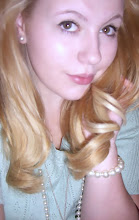
This type of documentary is mixed and this entitles narration that covers the information in the documentary, Interviews to provide relevant accurate information, re-constructions to act as a visual for the audience and dramatise the documentary, Observations and archived footage to support the facts. This documentary looks at a series of horizon documentaries to understand whether the ideal of ‘God’ within society today has ended and whether the public have moved on.
This documentary is based around religion this means it has many cutaways of religious figures and buildings to show this, science is also a theme of this documentary because it is science and technology that seems to be ‘killing god’. Knowledge is another theme as we are constantly being show people with knowledge and cutaways of books and museums.
All documentaries have a narrative structure for the audience to follow a sort of plot/ dilemma un-role through out the documentary, so this documentary is no different. This documentary starts with the question/ conflict is science killing god? To demonstrate this conflict visually a re-construction is used of people in the Victorian era arguing about this very thing. Then the documentary moves on to look at the elements within the argument as to why the idea of god is going and the conflicts this brings to society, such as education, evolution and the human brain. Finally the end of the programme offers a compromise to the audience and relates the work of science towards god, who is said to have created ‘the bigger picture’, as this means that the documentary is unbiased.
The camerawork in a documentary tends to be very conventional to all documentaries, they always use close-ups/medium close-ups during an interview with an expert as this shows the audience that the person in important towards the information within the documentary as this documentary shows. Close ups are also used on objects of importance or relevance during cutaways to add visual effects. Long/establishing shots are used to set the scene for the places the documentary is set i.e. a church, a museum. Zooms are used during the footage of the court case to add importance to some of the people and add to the frantic feel the media brings. There is a interesting pan used to show the press as this symbolises how important people think this issue is. There is a establishing high angled shot of Lords used, this is to give the audience that they are high above the people and almost as if we are god looking down on them.
The mise-en-scene is relevant towards the themes in this documentary which means that the cutaways are related to either religion or science. This is also supported by the fact that the narrative on screen in set within a church or a museum to show the two conflicting settings/opinions. The cutaways show people in religious dress and scientists in lab coats again showing how both ideas conflict, and symbolises this idea.
Sound is used effectively in this documentary more then most. At the start of the documentary, the conflict of whether God is ‘dead’ is shown through a sound bed of dramatic violins. The documentary is narrated for the most part and natural sound in used for the interviews. During the old footage of the scopes court case old movie reel sound is used to em phasise the age of this footage. Sound effects where relevant to the information within the documentary for example a school bell rang when the documentary was talking about education and an electric zapping noise was used during the ‘god helmet’ introduction. A song was used during the part about evolution which included words about not being a monkey that was relevant to the context. The modern day court case had more modern music that was upbeat to symbolise to the audience that the idea of god being ‘dead’ was modern. In contrast religious music played during the moments of religious cutaways and the ‘god helmet’ introduction.
phasise the age of this footage. Sound effects where relevant to the information within the documentary for example a school bell rang when the documentary was talking about education and an electric zapping noise was used during the ‘god helmet’ introduction. A song was used during the part about evolution which included words about not being a monkey that was relevant to the context. The modern day court case had more modern music that was upbeat to symbolise to the audience that the idea of god being ‘dead’ was modern. In contrast religious music played during the moments of religious cutaways and the ‘god helmet’ introduction.
The editing was used cleverly in this documentary, the cuts where very fast paced when the documentary was on the topic of science. This sent a message to the audience that science is more exciting then religion, as the religious cutaways were longer and less interesting, again this shows the contrast between religion and science. Superimposition was used over the American flag and the footage of a brain scan and at other various parts of the documentary, I think this symbolised how the two topics can sometimes overlap. The excitement of the court case was also demonstrated through fast paced editing. Fades were used to act as a smoother transition to cutaways.
The archived material was used from old documentaries which provided opinions though out the different time periods. The Scopes’ ‘monkey’ trial footage was used also to support that this is a debate that has been going on for decades. News footage of the court case in cover again had this impact that it was an important topic that made headlines. The interviewing graphics were quite simple as they are in most documentaries and displayed the interviewees’ name, the date it was filmed, and the name of the documentary the footage came from. A huge logo of the series of documentaries was displayed to give the documentaries presence.

No comments:
Post a Comment